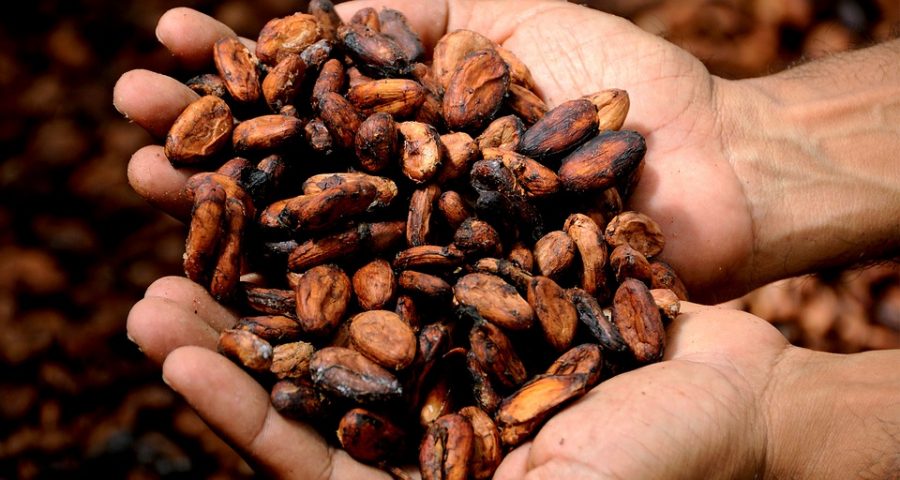Uncovering the truths of chocolate
Cacao beans straight from the pods are white, but when they are dried in the sun they form a tannish, brown color. The demand for chocolate is increasing, and there is pressure on farmers by commercial brands to produce more and more.
April 7, 2020
There is nothing more satisfying, comforting, and delicious than chocolate. It embodies feelings of love, pain, celebration, and happiness all in one delicious package. Many people are unaware of the long process that chocolate goes through to be sold on our shelves. Chocolate comes from cacao beans that originate from Central and South America. Cacao has to grow in special conditions that are located near the equator. The Aztecs utilized the beans as currency, rewards for soldiers, rituals, and for medicinal purposes. It was primarily eaten by elites because it symbolized wealth and luxury. The Mayan and Aztec cultures made drinks out of it as a way to advance their health. Around 1900 BCE, the cacao beans were prepared and grounded with ingredients like cornmeal and chili for a drink. When the Spanish arrived to invade the native civilizations in South America, they soon discovered cacao’s uniqueness and brought some back to Europe. Liquid form was the most common way in which this ingredient was used, but the invention of the Cocoa Press changed all this. It was invented in 1828, and it had the ability to separate the cocoa butter from the bean. This process could make cocoa into a powder in which chocolate companies would mix it with combinations of cream, sugar, and milk. The creation of milk chocolate by Daniel Peter caused a high spike in demand.
Currently, the majority of chocolate is grown in Cote d’Ivoire in West Africa. They supply about two-thirds of the world’s cacao production. The problem lies in how the cacao is cultivated. For years, some chocolate companies have been accused of human trafficking offenses, which is a modern-day form of slavery. Children are at most risk for this kind of threat. The high demand for chocolate around the world has caused the supply need to increase drastically. Each year the population eats millions of tons of chocolate. The large consumption comes from companies like Mars who own bars like Snickers, M&M’s and Twix, Nestle, Hershey Co, and The Ferrero Group. Well-known companies Nestle and Hershey Co are just some of the brands taking responsibility for inappropriate labor conditions to produce their chocolate, and lawsuits have been filed against both companies. The living conditions around these cacao farms in Cote d’Ivoire are less than sustainable, and most farmers do not earn living wages, while big-name companies profit off of their exploitation. Some areas are poverty-ridden, and the need for schools and fresh drinking water are severely needed. While there have been some changes made, there is still progress to be made.
Consumers play a big role in the change for more regulations placed around chocolate. Humanities teacher Mr. Cope said, “You should see if the way they harvest their chocolate is with manual labor, and if they do it fairly and ethically, it is a company worth supporting your dollars. It can not be taste alone that determines what companies you choose to purchase.” One step consumers can take is to support ethical chocolate brands. Those companies who have certified labels that say “fair trade” are choices that can be chosen to be more conscious about the chocolate you are purchasing. Alter Eco, Theo Chocolate, and Endangered Species are just some examples that are fair trade and making efforts for change. Since chocolate is such a large part of so many lives, it is important to invest in sustainable and fair trade companies to ensure the safety of the cacao farmers.












